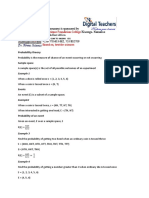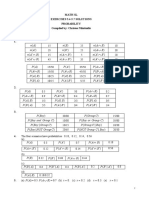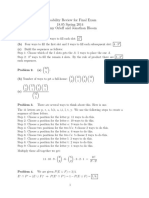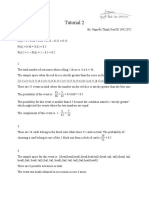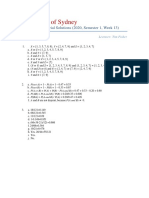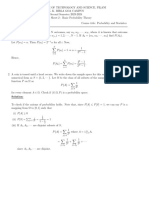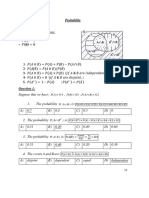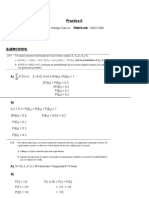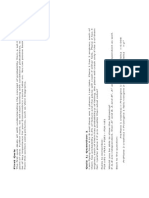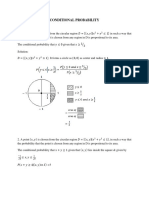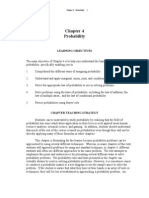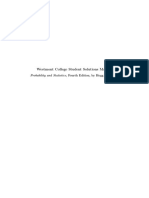0% found this document useful (0 votes)
14 views9 pagesSolution Chapter 01
The document presents various probability problems and their solutions, including calculations for joint, conditional, and marginal probabilities. It covers scenarios involving physical therapy visits, car insurance, sample spaces, and events with multiple outcomes. The document also explores the concepts of independence and mutual exclusivity in probability.
Uploaded by
tanjim09826Copyright
© © All Rights Reserved
We take content rights seriously. If you suspect this is your content, claim it here.
Available Formats
Download as PDF, TXT or read online on Scribd
0% found this document useful (0 votes)
14 views9 pagesSolution Chapter 01
The document presents various probability problems and their solutions, including calculations for joint, conditional, and marginal probabilities. It covers scenarios involving physical therapy visits, car insurance, sample spaces, and events with multiple outcomes. The document also explores the concepts of independence and mutual exclusivity in probability.
Uploaded by
tanjim09826Copyright
© © All Rights Reserved
We take content rights seriously. If you suspect this is your content, claim it here.
Available Formats
Download as PDF, TXT or read online on Scribd
/ 9




